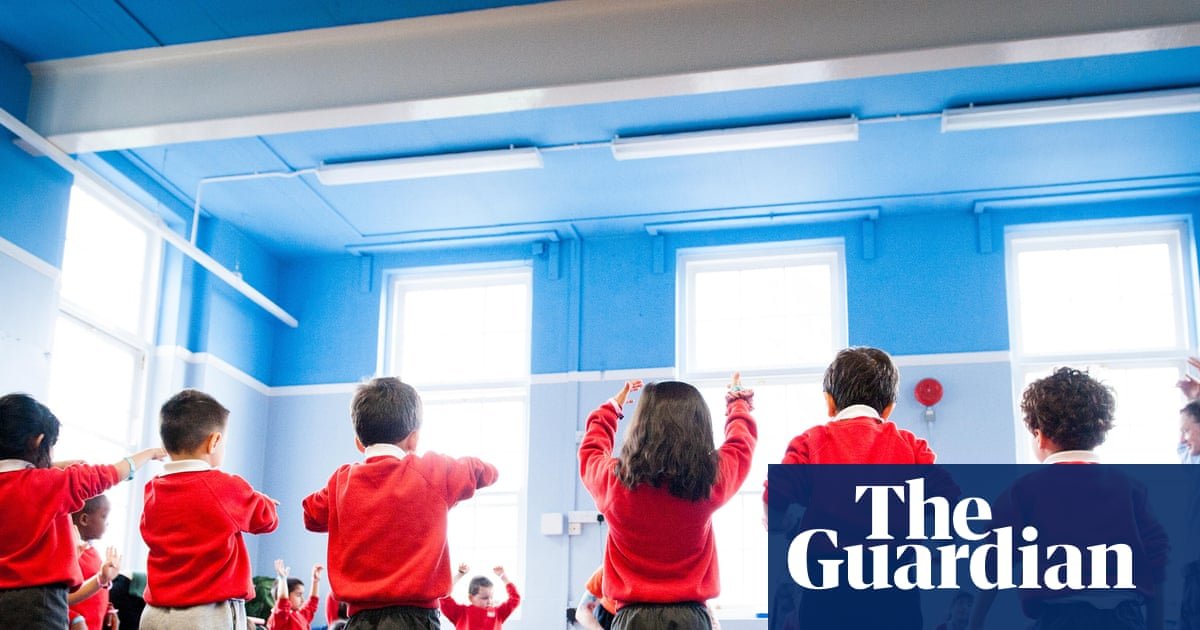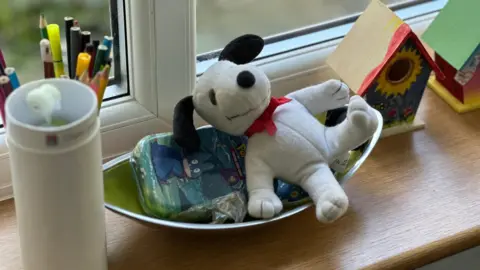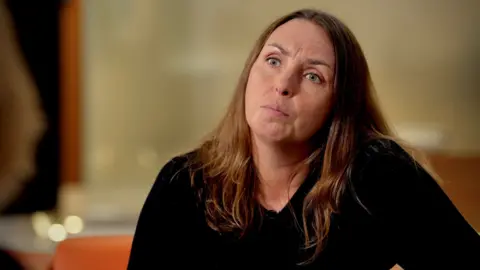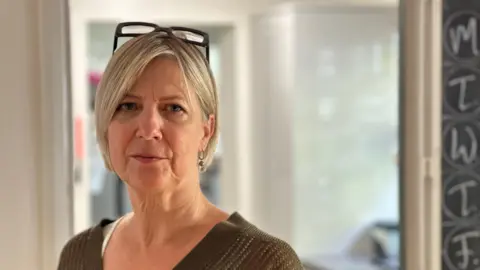Education
AI-Powered Chatbots Bringing Sex Education to the Global South

In a small, remote village of Jharkhand, in the eastern region of India, an adolescent girl hesitates over a question she would never dare ask her mother: “When will I get my period?”
Instead, she picks up the cellphone she shares with her family, opens WhatsApp, and types her question for Disha Didi, a chatbot that feels like a trusted didi, Hindi for older sister. Seconds later, it responds.
This experience mirrors what thousands of women across the Global South, including India, Lebanon, Congo, and Latin America, are now doing — turning to AI-powered chatbots for sexual and reproductive health and rights (SRHR) information that they cannot find at home or in classrooms.
The rise of these tools underscores a critical gap in information and education. Young people are turning to chatbots because schools, families, and health systems have failed to provide even the most basic knowledge about sexual and reproductive health.
A report by the philanthropic NGO Dasra notes that 71% of adolescent girls in India are unaware of menstruation before their first period, leaving them unprepared, anxious, and at risk of health complications. Across much of the Arab world, sexual and reproductive health education is either absent, considered taboo, or filtered through layers of misinformation.
This lack of reliable guidance leaves young people struggling to make informed decisions about their health and rights. Where traditional systems fall short, digital “counselors” like India’s Disha Didi and Lebanon’s Ask Aunty are offering culturally grounded, discreet, and reliable guidance on topics from menstruation to contraception.
Disha Didi from India
Since 2000, the Ipas Development Foundation (IDF), an NGO focused on sexual and reproductive health, has worked to improve access to safe abortions. Over time, they saw that young women in rural Indian communities, constrained by societal norms, minimal family support, and scarce health care resources, were missing access to essential knowledge and services.
To reach them, the nonprofit trained youth leaders to share SRHR information and connect women to public health services. When COVID-19 disrupted in-person outreach, the team created Disha Didi, a WhatsApp chatbot that delivers information directly to youth communities.
“There was an unmet need,” explains Pallavi Lal, who manages digital intervention at IDF. “Among youth of 15 to 24 age group, there was a lack of knowledge and agency, and a stigma around seeking information on sexual and reproductive health.”
The chatbot was designed for young women in rural areas, providing information in Hindi and Bengali across the states of Assam, Madhya Pradesh, Jharkhand, and West Bengal. It doesn’t send notifications, keeping conversations private from family members.
“A key feature of this expanded chatbot was its collaborative development process,” Lal explains. “A team of gynecologists helped develop the content, and we worked closely with youth community members to ensure that the bot addressed specific local needs and contexts.”
Using these insights, and with guidance from health experts, the team built a question bank of over 20,000 queries to ensure that the chatbot responds accurately.
Even the name, Disha Didi — older sister who provides guidance — was one that was chosen by the community of adolescent women.
Users can interact with the chatbot in three ways: navigate topics through a menu, type open-ended questions, or connect with a human counselor for more detailed guidance. Since its launch in 2020, the chatbot has reached 29,000 unique users, handling over 72,000 conversations. Nearly a third of these chats focus on menstruation, while questions about adolescence and sexually transmitted infections make up 23% and 22% of interactions, highlighting the topics young people are most curious about.
Ask Aunty from Lebanon
When the team at Raseef22, a Lebanon-based media organization, noticed a spike in SRHR searches on their website, they realized young people across the region were turning to them for answers. “A third of our organic clicks last year came from SRHR-related queries,” explains Rokaya Kamel, who oversees AI integration at Raseef22.
“But we didn’t want to just put out more articles. And people [may not] end up reading it.”
To address the lack of accessible and engaging SRHR content, the team created Ask Aunty, an AI-powered chatbot developed in collaboration with Google News Initiative’s JournalismAI Innovation Challenge. The chatbot draws only from Raseef22’s editorial archive and trusted partner content (a deliberately limited dataset), to keep information reliable, relevant, and free from the biases that come with open-source material. It’s also programmed to admit when it doesn’t know an answer and has to direct users to trusted medical resources in those cases.
The team chose to give the chatbot the persona of a witty 56-year-old Egyptian aunty who provides answers in a warm and conversational tone. Line Itani, product and communication manager at Raseef22, explains that Egyptian Arabic was selected as the chatbot’s language because it is the most familiar and accessible dialect across the Arab world.
“We created her to be an older aunty figure — someone with experience, someone who’s seen things. It also feels culturally appropriate to have her speak to these issues, as opposed to a twenty-something. We had to be culturally sensitive throughout the process,” Itani adds.
Other cultural nuances that went into developing the chatbot persona were the tone and expressions. “The tone of Ask Aunty was very important, because it’s the difference between creating a safe space or alienating users,” explains Kamel. “We had to make sure she sounds like a real person.”
The team also chose to use medical terminology rather than everyday colloquial language, which can carry cultural biases. Line explains that SRHR topics are often clouded by misinformation, such as the cultural practice of female genital mutilation (FGM). The word khatan (implying cut) attempts to equate FGM with male circumcision, which obscures the severe and harmful consequences of FGM. Similarly, the term taharat al-banat (purification of girls) equates the practice to incorrect notions of being clean or pure. By deliberately using the medical term for FGM (tashwih al-a’daa al-tanasuliya al-unthawiyya), the team is moving away from language that reinforces cultural biases or misconceptions.
“These are sensitive issues that have been normalized in society, so we have to address them carefully and break misconceptions bit by bit,” Itani says. As with AI in other languages, the Raseef22 team faces ongoing challenges, continually testing and training the system to ensure that Arabic sentences are grammatically correct and linguistically natural.
Currently in beta, the chatbot be will soon be available on both web and app, giving young people across the Arab world a private, reliable space to ask questions and access guidance they have long lacked.
These chatbots are empowering young people to access information and make informed choices that traditional systems have failed to provide. Their rise highlights both the urgent need for SRHR education and the potential of technology to meet it.
More articles by Category:
Health,
International,
Science and tech
More articles by Tag:
Reproductive rights,
Reproductive health,
Abortion,
Sex education,
Technology,
India,
Lebanon
Education
SDOC talks AI in schools – upstatetoday.com

SDOC talks AI in schools upstatetoday.com
Source link
Education
Special needs overhaul risks becoming ‘welfare reforms mark 2’, IFS finds | Special educational needs

Special needs reforms for children in England could turn into “welfare reforms mark 2” unless the government can convince parents that it is not aiming to save money, according to a report by the Institute for Fiscal Studies.
The thinktank said any changes to the current system of education, health and care plans (EHCPs), which mandate tailored support for children with special needs, will be highly controversial among parents, but said reform was “long overdue” as the number of EHCPs issued has ballooned by 80% since 2018.
About one in 20 school-age children and young people in England currently have an EHCP.
Earlier this year the government was forced to U-turn on changes to disability and health-related benefits after a huge backbench MPs’ rebellion, and the Institute for Fiscal Studies (IFS) suggests that botching reforms to special educational needs and disability (Send) provision could provoke a similar backlash.
In a briefing entitled England’s Send Crisis, the IFS said: “Any reforms are likely to generate controversy. If the focus is on reducing legal rights to cut short-term costs, this could easily turn into welfare reforms mark 2.
“To avoid this, the government needs to be candid: the current system is failing many of the children it is meant to support, despite billions in additional spending and a complex framework of legal entitlements.
“A successful reform should articulate a clear vision for a system that supports all children while delivering better value for money.”
Luke Sibieta, the co-author of the briefing, said the success of any reforms hinged on the government’s presentation of the white paper it is preparing to publish later this year.
“If the focus of what’s in the white paper, and how it is sold, is all about saving money and reducing burdens, then it’s very hard to see how this policy will go through.
“But if it is about providing a better quality of service, or providing access to support earlier, in an easier and better way, then I can see how the policy can be successful,” Sibieta said. “When you talk to parents, no one actually likes the EHCP process.”
Bridget Phillipson, the education secretary, also faces a struggle to convince the Treasury that more spending is needed, especially to build more dedicated special schools, as well as dedicated Send units within mainstream schools.
The IFS said creating more state-funded special schools was an “obvious solution” that would allow local authorities to avoid using more expensive private special schools, where the average cost for each pupil is £62,000 a year compared with £24,000 in the state sector.
The number of pupils with EHCPs at private special schools has tripled since 2016, from 10,000 to 30,000, with that increase alone accounting for nearly £1bn of the £4bn annual rise in high-needs spending over recent years.
The IFS was also highly critical of EHCPs, legal documents in which local authorities and parents agree on the additional support for children with special needs.
“EHCPs are meant to guarantee help. However, you cannot magic quality into existence by writing it on a legal document,” the report notes.
“As a result, the quality of current provision is patchy. Many children are pulled out of lessons for support from poorly trained teaching assistants, missing time with qualified teachers. We have almost no way of judging whether the billions in extra funding represent value for money.”
A Department for Education spokesperson said: “This government inherited a Send system left on its knees – which is why we are listening closely to parents as we work to improve experiences and outcomes for all children with Send, wherever they are in the country. Our starting point will always be improving support for children.”
Education
Cost of children’s homes doubles but care can be poor

Alison HoltSocial affairs editor and
James Melley and Judith Burns
 BBC
BBCThe cost of residential care for vulnerable children in England has nearly doubled in five years but many children still do not receive appropriate care, says a report from the independent public spending watchdog.
The National Audit Office (NAO) says councils on average spent £318,400 on each child placed in a children’s home in the year ending March 2024.
But these huge sums do not represent value for money, the report concludes.
“I do not know where the money is being spent,” says Ezra Quinton, now 20, who recalls smashed windows and broken glass in the showers of one of the care homes he was placed in.
Ezra, who now works for Become, a care leavers’ charity, first went into care aged nine.
Originally from Greater Manchester, he remembers being moved to a different home every few months, often many miles from where he originally lived.
He thinks he had up to 60 different placements and although he has spent most of his life in Salford and Stockport, he has lived in Wales, Liverpool, Crewe and Leeds.
His education was considerably disrupted but he did achieve C grades in all of his GCSEs.
At one home the windows were boarded up because of smashed windows.
“We were told to wear shoes if we wanted to shower because they didn’t clean up the glass properly,” he told BBC News.

The NAO report found rising costs were driven by a record number of children in care, the increasing complexity of their needs – and a profit driven market.
In 2023-24 councils spent £3.1bn on residential placements, in a market the report describes as “dysfunctional”.
It says councils are struggling to find enough appropriate placements, arguing that this allows many private care providers to cherry pick the children they take, based on how much support they need and how much profit this allows.
The report draws on previous research which showed the 15 largest providers of children’s homes making average profits of more than 22%.
Report author Emma Wilson says several factors contribute to rising costs but with the overwhelming majority (84%) of children’s homes run for profit: “It’s really important to get right that balance between supply of available care home places and demand.”
She wants the Department for Education to do more to oversee a market which she says is failing children in residential care.
“The NAO report concludes that the system of residential care for looked after children is not delivering value for money. On the one hand, costs have doubled to over three billion in the last five years, whilst many children are not in appropriate settings,” Ms Wilson told BBC News.
The report highlights how in March 2024 two thirds of children in residential care were in homes outside their local authority and almost half (49%) were more than 20 miles from home.
The Department for Education said in a statement: “Vulnerable children across the country have long been let down by years of drift and neglect in children’s social care, which this report lays bare.”
It added that it was “driving the largest ever reform of children’s social care” to “break the cycle of crisis for children” – pointing to its planned recruitment of more family help workers and new legislation aimed at ending profiteering in care homes.

Claire Bracey, interim chief executive of Become, says the report “is once again lifting the lid on the extortionate profits that are being made from providing homes for our most vulnerable children”.
“This market failure is leading to the most unforgivable failure [for] the futures of the children in our care…
“Children in care can’t wait. Urgent steps must be taken now,” she argues.
But some small, privately run, children’s homes insist they don’t make excessive profits.
Sara Milner, who set up Cherry Wood children’s home in Surrey four years ago, after a career in local authority care, says staffing accounts for 80% of costs.
“The fees we charge the local authority are reflective of our direct costs and we make moderate margins… but obviously we have to be able to make profits to be a viable business and to offer security for the young people’s future which is obviously really important when you’re doing this type of work,” she told BBC News.
With demand for places high, she had also hoped to invest in a second children’s home, but says current pressures, including rising costs and difficulties recruiting staff, mean that has been delayed.

The government has already said it plans to limit the profits private companies can make, however the Children’s Homes Association, which represents providers paying tax in the UK, argues that council-run homes can in fact be more expensive.
“We know that official data shows that local authority costs are higher,” said the association’s chief executive Mark Kerr.
“So if there’s a value for money question then the independent sector arguably demonstrates more value for money than local authorities,” he added.
-

 Business2 weeks ago
Business2 weeks agoThe Guardian view on Trump and the Fed: independence is no substitute for accountability | Editorial
-
Tools & Platforms1 month ago
Building Trust in Military AI Starts with Opening the Black Box – War on the Rocks
-

 Ethics & Policy2 months ago
Ethics & Policy2 months agoSDAIA Supports Saudi Arabia’s Leadership in Shaping Global AI Ethics, Policy, and Research – وكالة الأنباء السعودية
-

 Events & Conferences4 months ago
Events & Conferences4 months agoJourney to 1000 models: Scaling Instagram’s recommendation system
-

 Jobs & Careers2 months ago
Jobs & Careers2 months agoMumbai-based Perplexity Alternative Has 60k+ Users Without Funding
-

 Podcasts & Talks2 months ago
Podcasts & Talks2 months agoHappy 4th of July! 🎆 Made with Veo 3 in Gemini
-

 Education2 months ago
Education2 months agoMacron says UK and France have duty to tackle illegal migration ‘with humanity, solidarity and firmness’ – UK politics live | Politics
-

 Education2 months ago
Education2 months agoVEX Robotics launches AI-powered classroom robotics system
-

 Funding & Business2 months ago
Funding & Business2 months agoKayak and Expedia race to build AI travel agents that turn social posts into itineraries
-

 Podcasts & Talks2 months ago
Podcasts & Talks2 months agoOpenAI 🤝 @teamganassi


